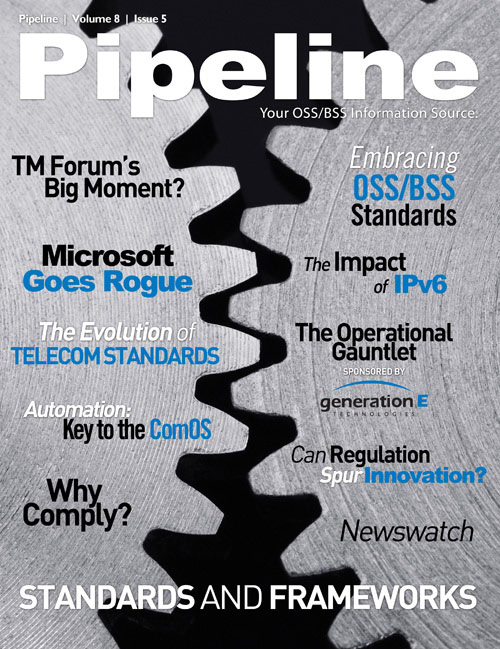By: Casey Kindiger

Information and communications networks have become too big and too complex for cost-effective management by traditional operational support system (OSS) methods and tools. The spectrum of next- generation capabilities has rapidly evolved beyond VoIP to include mobile video, cloud explosion and onwards. Each step forward disrupts legacy business models yet also opens new doors to human experience and business exploitation. As much as these technological advances have required a re-evaluation of business and service methodology, so too do they also demand a re-assessment of current notions of OSS and business support systems (BSS) practices.
The service providers that survive the market transformations currently underway must put their assumptions about service operations through a gauntlet; and, if they are to succeed at out-innovating their competition, they must also ensure that their back-end and front-end processes and tools are more adaptive, automated and human-centric than ever before.
The seemingly intractable tension between increased competition, higher service quality requirements and fixed operational costs acts to constrain innovation and drive margins down for every participant in the market. By making targeted process improvements across network operations and customer care, service providers can achieve significant structural advancements in their cost models and remove current constraints to innovation, namely cash flows. The means of accomplishing this objective rests within a new software discipline called IT process automation (ITPA). ITPA tools and associated methods hold the promise of enabling a significant, readily-quantifiable, re-investment of firm operational resources back into innovation and other revenue-generating areas.
Network operations and the network operations center (NOC), sometimes referred to as Level 1 support, form the foundation for high-quality service assurance – ensuring that the network itself supports the increasingly complex lattice of services that ride upon it. Each NOC that a service provider manages tends to be either geographically or product focused, and can be staffed by anywhere from six to 15 personnel on a single shift. The business process of the NOC is typically defined across a classical FCAPS (fault management, configuration, accounting, performance and security) process model, centered on fault management.
 As NOC organizations have been constructed over the past 15 years, their services can be loosely classified into proactive identification of existing or potential service problems (“diagnostics”), triage of service problems (“triage”) and routing of problems to the appropriate internal or external engineering resources (“remediation”).
As NOC organizations have been constructed over the past 15 years, their services can be loosely classified into proactive identification of existing or potential service problems (“diagnostics”), triage of service problems (“triage”) and routing of problems to the appropriate internal or external engineering resources (“remediation”).
But each of these NOC services, once established to a reasonable level of maturity, has tended towards a state of operational stagnation, able to scale upwards with increased revenues, but with little or no economies of scale. The NOC organizations have similarly been able to incorporate new technologies and products to support new market demands, but have been unable to optimize around those new products in a way that translates into improved operational efficiencies. One of the primary methods used to address these strategic challenges has been to employ lower-cost labor, either through outsourcing arrangements or other forms of labor arbitrage. But labor costs are equalizing throughout the world and business managers are now required to begin looking at making these NOC organizations more adaptive.










